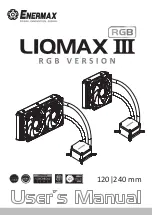
A.11
How is SAS Different from Parallel SCSI?
In summary, although SAS and parallel SCSI both use the SCSI command set, how they move data from one
place to another is very different. To support point-to-point serial data transport, SAS introduces new types
of connectors, cables, connection options, and terminology.
Generally speaking, SAS is faster and more flexible than parallel SCSI, and provides more options for building
your storage space. SAS lets you mix SAS and SATA disk drives together, and lets you connect many, many
more devices.
This table describes many of the main differences between the two interfaces.
Serial Attached SCSI
Parallel SCSI
Serial interface
Parallel interface
Maximum speed 300 MB/sec per phy when in half-duplex mode
Maximum speed 320 MB/sec shared by all devices on the
bus
Supports SATA and SAS disk drives simultaneously
Supports SCSI devices only
More than 100 disk drives per SAS card, using an expander (see
SAS Expander ConnectionsSAS expander connectionsexpander
connections
) or 50 SATAII disk drives.
Up to 16 devices per SCSI channel
Supports single- and dual-port devices
Supports single-port devices only
Uses unique SAS addresses to differentiate between devices
Uses SCSI IDs to differentiate between devices connected
to the same adapter
SAS addresses self-configured by SAS devices
User intervention required to set SCSI IDs
Requires no bus termination
Requires bus termination
SAS connectors (see
Cablescontrollers SAS cablesSAS cables
Standard SCSI connectors
48
Microsemi Proprietary and Confidential. Installation and User's Guide Revision 5
Introduction to SAS
















































